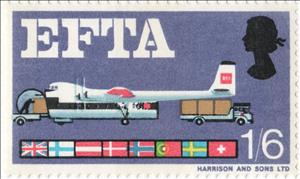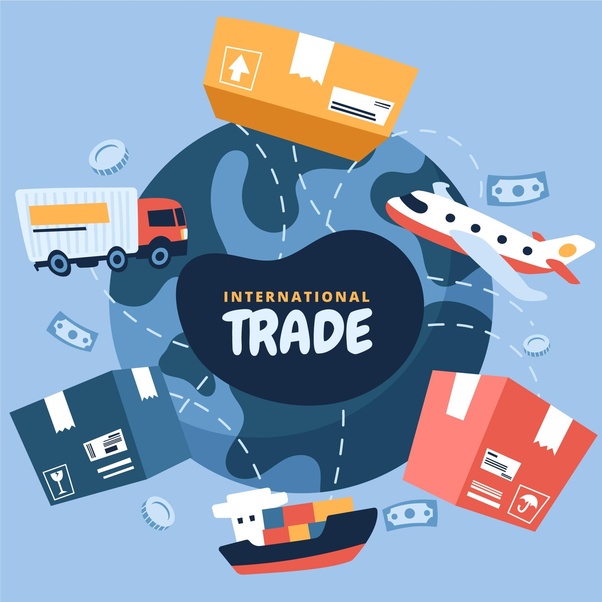Stamp: Air Freight (phosphor) (United Kingdom of Great Britain & Northern Ireland 1967)
Air Freight (phosphor) (United Kingdom of Great Britain & Northern Ireland 1967)
20 February (United Kingdom of Great Britain & Northern Ireland ) within release EFTA goes into circulation Stamp Air Freight (phosphor) face value 1'6 British shilling
| Stamp Air Freight (phosphor) in catalogues | |
|---|---|
| Stanley Gibbons: | Sg: GB 716ph |
Stamp is horizontal format.
Plate Flaw : Broken undercarriage leg.Also in the issue EFTA:
- Stamp - Sea freight face value 9;
- Stamp - Sea Freight (phosphor) face value 9;
- Stamp - Air Freight face value 1'6;
- Stamp - Air Freight (phosphor) face value 1'6;
- Stamp - Sea Freight (phosphor) face value 9;
- Stamp - Air Freight face value 1'6;
- Stamp - Air Freight (phosphor) face value 1'6;
- Stamp - Air Freight (phosphor) face value 1'6;
Stamp Air Freight (phosphor) it reflects the thematic directions:
An aircraft (pl. aircraft) is a vehicle that is able to fly by gaining support from the air. It counters the force of gravity by using either static lift or the dynamic lift of an airfoil, or, in a few cases, direct downward thrust from its engines. Common examples of aircraft include airplanes, rotorcraft (including helicopters), airships (including blimps), gliders, paramotors, and hot air balloons.Part 1 (Definitions and Abbreviations) of Subchapter A of Chapter I of Title 14 of the U. S. Code of Federal Regulations states that aircraft "means a device that is used or intended to be used for flight in the air."
Aviation is the practical aspect or art of aeronautics, being the design, development, production, operation and use of aircraft, especially heavier than air aircraft. The word aviation was coined by French writer and former naval officer Gabriel La Landelle in 1863, from the verb avier (synonymous flying), itself derived from the Latin word avis ("bird") and the suffix -ation.
A flag is a piece of fabric (most often rectangular or quadrilateral) with a distinctive design that is used as a symbol, as a signaling device, or as decoration. The term flag is also used to refer to the graphic design employed, and flags have since evolved into a general tool for rudimentary signalling and identification, especially in environments where communication is similarly challenging (such as the maritime environment where semaphore is used). National flags are patriotic symbols with varied wide-ranging interpretations, often including strong military associations due to their original and ongoing military uses. Flags are also used in messaging, advertising, or for other decorative purposes. The study of flags is known as vexillology, from the Latin word vexillum, meaning flag or banner.
Trade involves the transfer of goods and services from one person or entity to another, often in exchange for money. Economists refer to a system or network that allows trade as a market.
Transport or transportation is the movement of people, animals and goods from one location to another. Modes of transport include air, rail, road, water, cable, pipeline and space. The field can be divided into infrastructure, vehicles and operations. Transport is important because it enables trade between people, which is essential for the development of civilizations.
A truck or lorry is a motor vehicle designed to transport freight, carry specialized payloads, or perform other utilitarian work. Trucks vary greatly in size, power, and configuration, but the vast majority feature body-on-frame construction, with a cabin that is independent of the payload portion of the vehicle. Smaller varieties may be mechanically similar to some automobiles. Commercial trucks can be very large and powerful and may be configured to be mounted with specialized equipment, such as in the case of refuse trucks, fire trucks, concrete mixers, and suction excavators. In American English, a commercial vehicle without a trailer or other articulation is formally a "straight truck" while one designed specifically to pull a trailer is not a truck but a "tractor"






